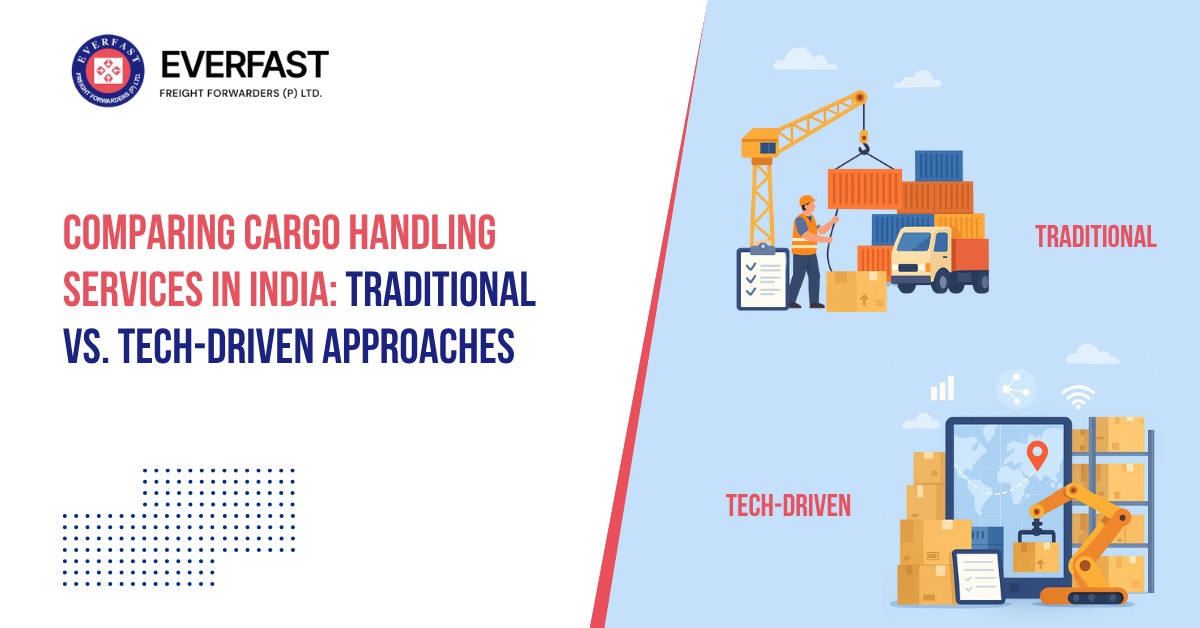
Comparing Cargo Handling Services in India: Traditional vs Tech-Driven Approaches
India’s cargo handling industry is undergoing a significant transformation. With the rise of e-commerce, global trade, and real-time expectations, traditional logistics models are being challenged by tech-driven alternatives. This blog highlights the key differences between conventional and technology-enabled cargo handling services and what they mean for businesses today.
Traditional Cargo Handling: Time-Tested but Outdated
Traditional cargo handling in India has relied heavily on manual processes, which often lead to inefficiencies. Key characteristics include:
- Manual Documentation: Physical paperwork like bills of lading and invoices increases the risk of errors and delays.
- Limited Tracking: Shipment status updates are often shared via phone calls or manual logs, reducing visibility and reliability.
- Labor-Intensive Operations: Sorting, loading, and unloading are predominantly done by hand, making operations slower and more error-prone.
- Stakeholders: Various logistics partners operate independently, often leading to communication gaps and delays.
While these methods have supported logistics for decades, they struggle to keep up with today’s demand for speed, accuracy, and transparency.
Tech-Driven Cargo Handling: Smarter, Faster, Scalable
Modern logistics companies are leveraging technology to streamline cargo handling. Features of tech-driven services include:
- Digital Documentation: Systems now automate invoicing, e-way bills, and proof of delivery, reducing paperwork and improving compliance.
- Real-Time Tracking: GPS and IoT devices provide instant visibility into shipment status, enhancing trust and planning accuracy.
- Automation & Robotics: Warehouses are adopting barcode scanners, conveyor belts, and robotic sorters to improve handling speed and accuracy.
- Integrated Systems: Platforms connect shippers, carriers, warehouses, and customs into one dashboard, ensuring seamless coordination.
- Predictive Insights: AI and data analytics help optimize routes, forecast demand, and reduce delivery times.
These innovations not only boost efficiency but also allow logistics providers to scale and adapt to changing market needs.
Traditional vs. Tech-Driven: A Quick Comparison
Aspect Traditional Tech-Driven
Documentation Manual Digital
Tracking Delayed Real-time
Operations Labor-intensive Automated
Coordination Fragmented Integrated
Scalability Limited High
The Way Forward
The logistics landscape in India is quickly shifting toward digital-first solutions. While traditional models remain in use—especially in smaller towns—the momentum is clearly on the side of innovation. With government initiatives like the National Logistics Policy and Gati Shakti, the ecosystem is ripe for tech-led disruption.
Conclusion
For Indian businesses aiming to grow efficiently, transitioning from traditional to tech-enabled cargo handling is no longer optional — it’s essential. Those who adopt the change will gain speed, visibility, and a competitive edge in the evolving logistics market.
